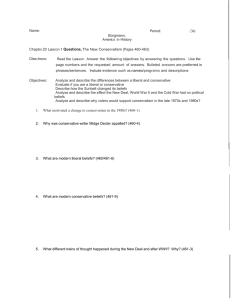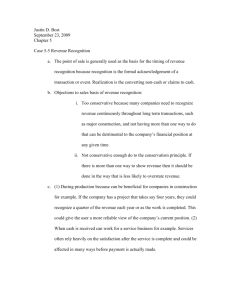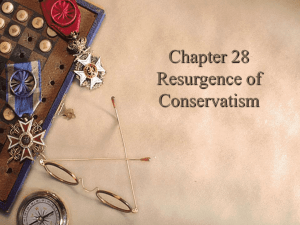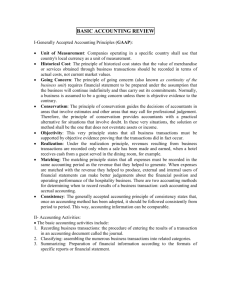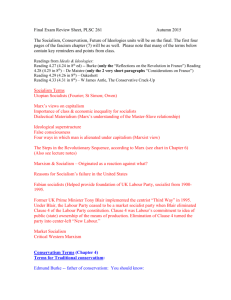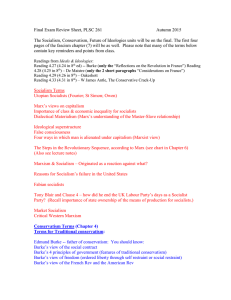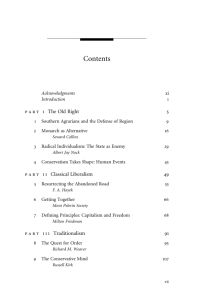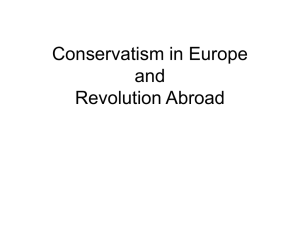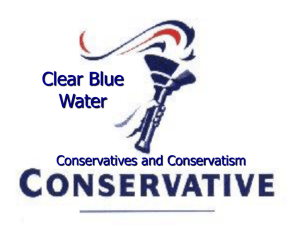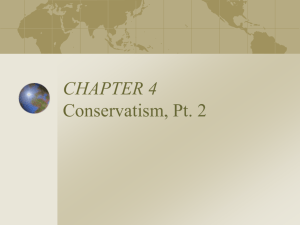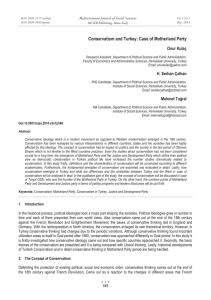Liberalism and Conservatism
advertisement
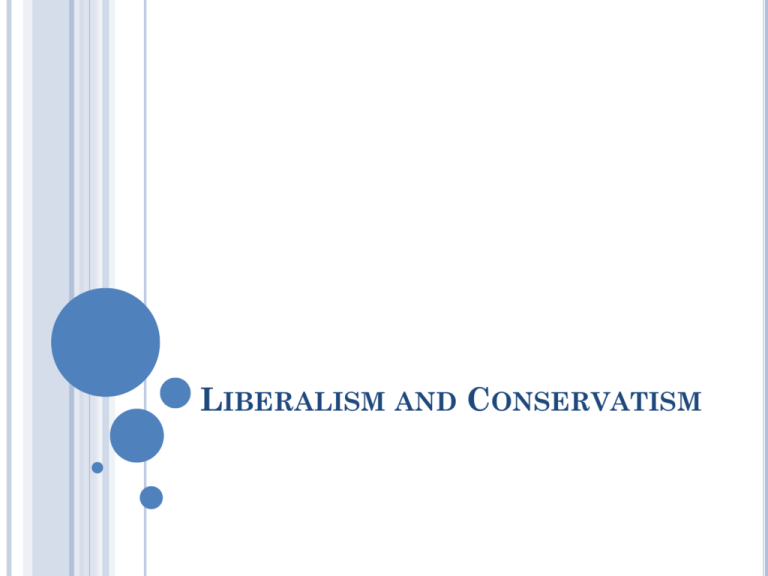
LIBERALISM AND CONSERVATISM LIBERALISM Government regulates economy to protect people from big business and wealthy elites Government plays active role in helping disadvantaged Americans Social Programs Tax burden on wealthier people LIBERALISM (CONTINUED) No government regulations of social behavior Free speech, privacy rights, religious freedom Diverse society key Higher taxes on the wealthy Greater assets shoulder more costs Redistribution CONSERVATISM General distrust of government Separation of Powers and Federalism key Sep. of Powers: Three Branches of Government Federalism: State and Federal Powers Government should stay away from economy Gov control makes economy less efficient, leads to more poverty, and causes overall loss of wealth CONSERVATISM (CONTINUED) Oppose high taxes and redistribution programs Take away incentives of hard work, discourage investments, and reduce amount of freedom in society Free enterprise system is the best economic system People and businesses will create wealth and higher standard of living if they make their own choices CONSERVATISM (CONTINUED) Government involvement in economy will lead to regulation of other behaviors Fear restriction of freedom Claim loss of upward mobility (ability to get to a higher standard of living) Support some government regulation of social behavior Example: Opposition to Roe v. Wade in regards to abortion CONSERVATISM AND RELIGION Believe that faith is vital to a successful society Social problems result from morality and character issues Should be addressed by religious faith and private efforts of churches, individuals, and communities CLASS DISCUSSION Who are the liberal members of our government today? Who are the conservative members of our government today? EXIT SLIP Do you tend to agree more with conservative or liberal beliefs? Explain your answer to this question citing at least 3 examples from class. Did you agree with the result of the political spectrum activity on your own beliefs? THE RISE OF CONSERVATISM Struggle against communism Communist governments active in economy Liberal ideals lead toward communism? Liberals against defense spending to stop communism from spreading Communism rejected religion Americans viewed it as a battle between good and evil Communism promotes economic welfare CONSERVATISM GROWS William Buckley’s National Review Conservative Magazine Spreading ideas via magazine, TV, radio Role of Young Republicans Young Americans for Freedom Push for greater role in government Conservative Republicans movement successful Barry Goldwater gets GOP nomination (loses) YAF supports conservative candidates THE SUNBELT South and West very conservative Southern conservatives (Democrat) Western conservatives (Republican) Northeast decided elections Northeast liberal so liberal politicians won elections Effects of WWII migration Jobs and factories in south and west Sunbelt’s economy expands Image of federal government different SUNBELT CONSERVATISM Northeast: Rustbelt Higher unemployment, high pollution Looked to government for help Sunbelt Opposed high taxes and federal regulations that could hinder growth Southerners against Civil Rights Westerners against environmental regulations on ranching, water use, and national resources SAGEBRUSH REBELLION Conservatives against federal laws that hindered the region’s development Battle over state v. federal powers (remember the ideals of conservatism) Economic growth the key to this rebellion RISE OF SUNBELT CONSERVATISM 1980: Population of Sunbelt surpasses population of Rustbelt Political power shift Becomes evident with election of Ronald Reagan TAXES AND CONSERVATISM Middle-class Americans in suburbs felt they were losing ground economically due to taxes for federal programs Tax revolt in California (Howard Jarvis 1978) Americans believe government became too big and taxes were too high Conservatives push for tax cuts and middle class votes are won THE RELIGIOUS RIGHT Court Case Results Upset Conservatives Roe v. Wade: Right to have an abortion protected by Constitution Limitations of prayer in public schools Protections on those accused of crimes Other concerns for religious right: Feminism Equal Rights Amendment THE RELIGIOUS RIGHT (CONTINUED) Evangelicals Protestants who believe they are saved from their sins through conversion (born-again) Make a personal commitment to follow Jesus Christ Roles Billy Graham and Oral Roberts Evangelicals spreading the word 70 million Americans described as “born again” Owned TV/Radio Stations, Newspapers, and Magazines TELEVANGELISTS Evangelical ministers spreading the word via television broadcasts Marion “Pat” Robertson: Christian Broadcasting Network Jerry Falwell: Old-Time Gospel Hour Moral Majority Television and mail campaign to register new voters who backed conservative ideals Falwell claimed to have registered 2 million voters by 1980 THE NEW REPUBLICAN COALITION American society had lost its way Watergate Scandal Taxation Special Interest Policies (Civil Rights, EPA) Unemployment Rate Inflation Energy Crisis Hostage Crisis Vietnam Soviet relations Promises of stability and a return to a better time
